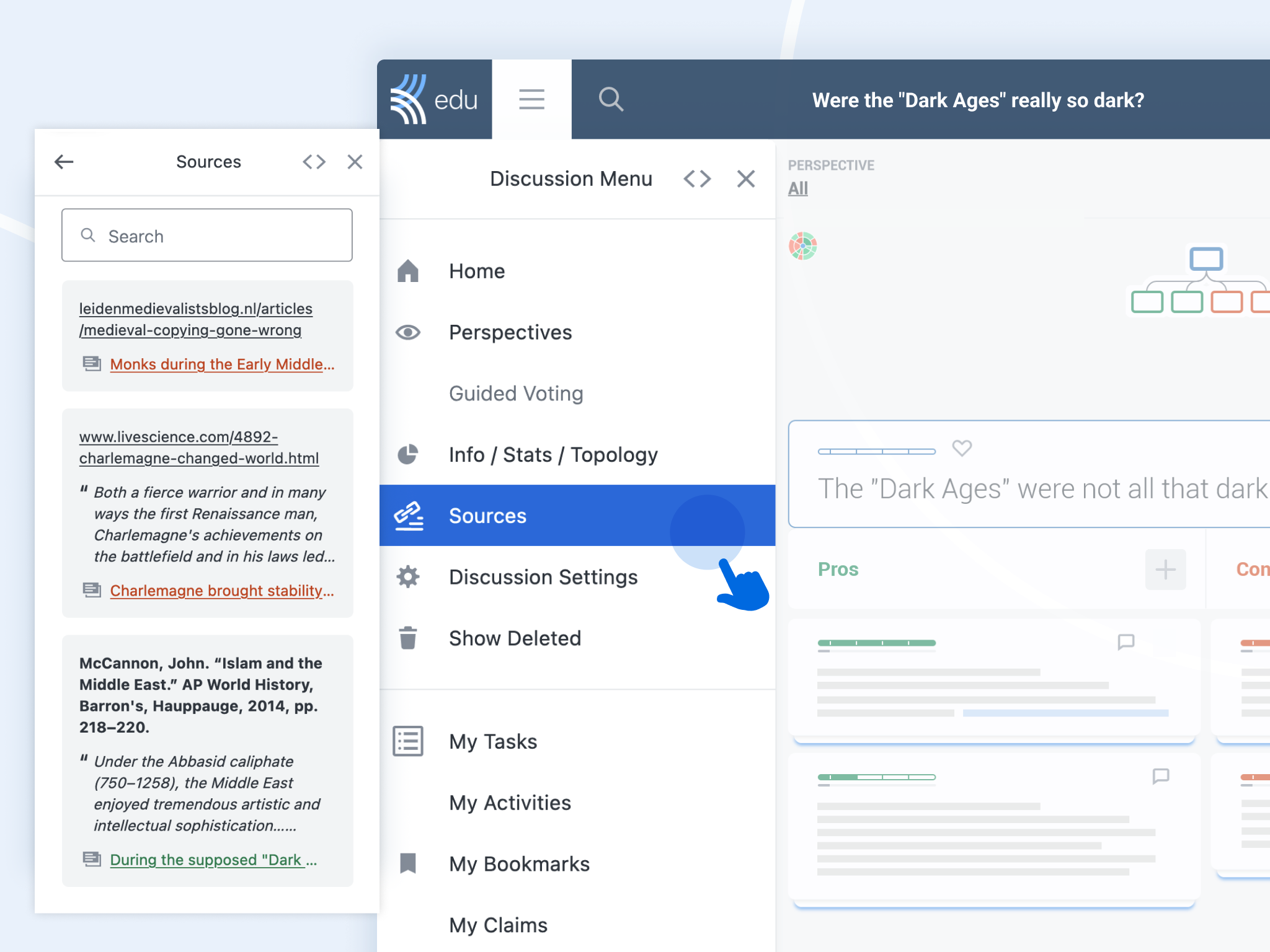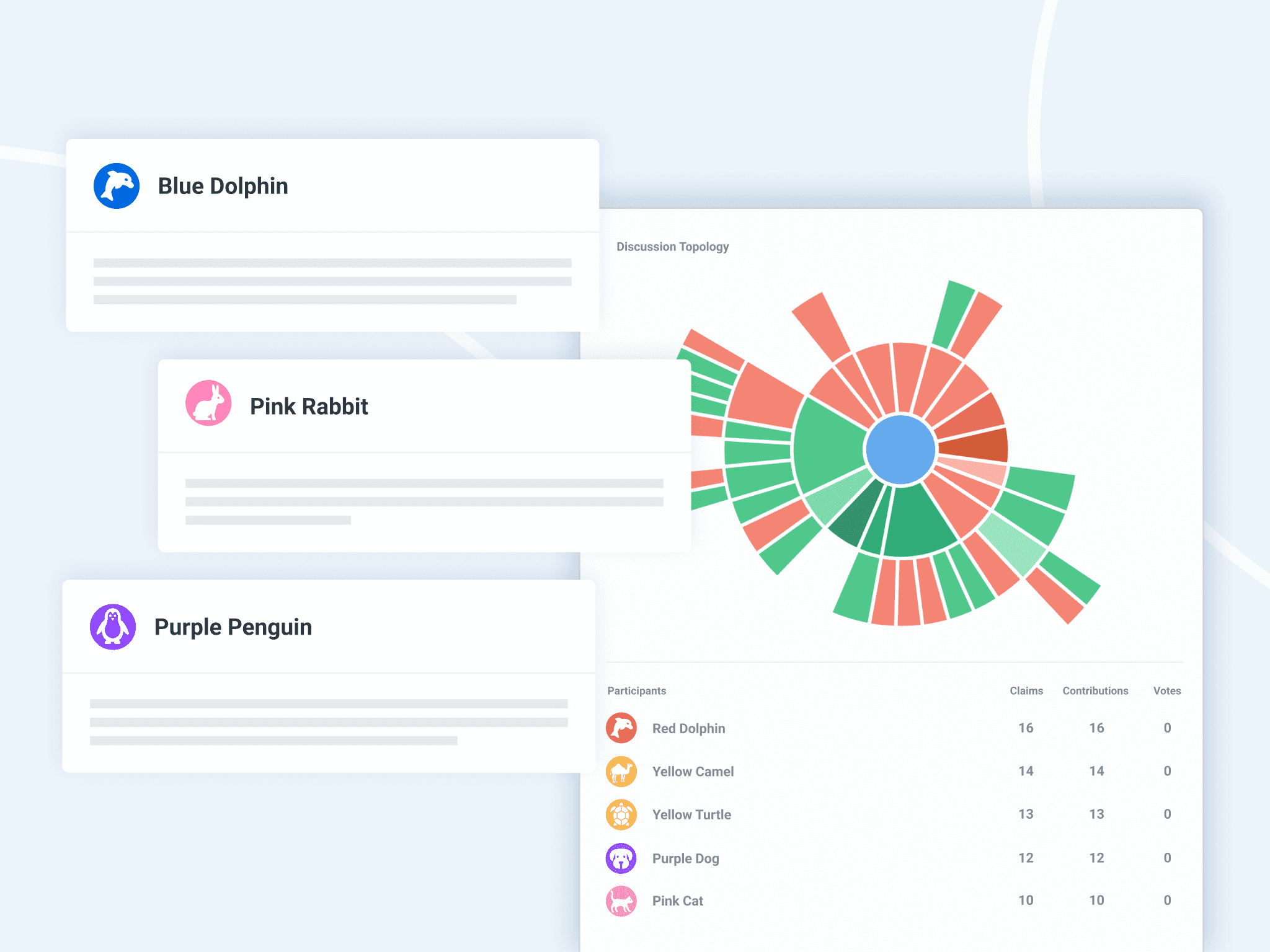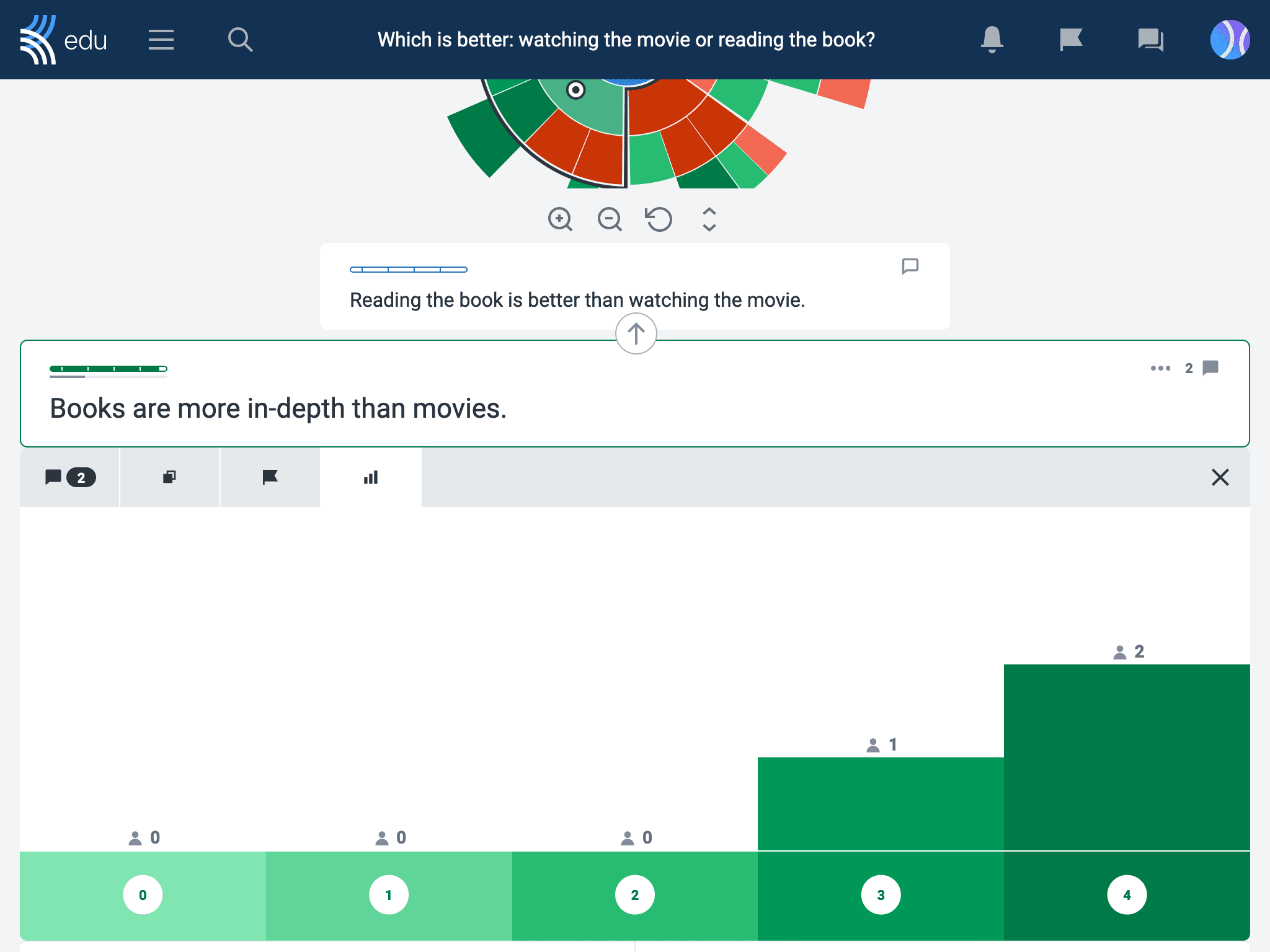Students may already be familiar with the concept of bias in the classroom. You may even have been a victim of their complaints! When these things happen, students may think you are biased and show a preference based on opinion rather than fact.
In particular, confirmation bias is a type of bias that is relevant in the classroom. Let’s take a look at some ways that Kialo can help address and tackle this with your students.
What is confirmation bias?
Confirmation bias describes the way someone with a pre-existing belief may interpret evidence in a way that confirms this belief. Or, how someone may search for information that only confirms their belief, rather than reflecting on different perspectives. This isn’t necessarily a bad thing. It’s an adaptive trait that makes it possible for the brain to quickly process all the information it receives.
Yet, confirmation bias can have negative consequences for individuals and society. Thus, it’s important for educators to raise awareness of it in the classroom.
Why teach about confirmation bias in the classroom?
Students can experience confirmation bias in different ways. First, they may be exposed to information in the media that is affected by confirmation bias. A media outlet focusing on profitability might sensationalize a story rather than giving the full picture.
Equally, journalists reporting on a conflict may only have access to sources from one side, making coverage unbalanced. Making students aware of these things can help them reflect on the reliability of the media that they consume.
Students may also find themselves caught in echo chambers or filter bubbles online, particularly on social media. Algorithms filter information fed to people based on their previous searches or online history, meaning students may only be exposed to limited information that supports their existing beliefs.
Media outlets may also sensationalize content to encourage users to increase their time spent online. Helping students become aware of this means they can be more deliberate when searching for information online, so they see multiple perspectives on an issue.
Students also need to be aware that confirmation bias can have serious consequences outside the classroom. Leaders with strong opinions may only take on board information that supports their existing beliefs. If nobody challenges this, it can lead to conflict that could directly affect students’ lives.
Activities to teach students about confirmation bias
With an ever-increasing amount of information at students’ fingertips, educators have a responsibility to counteract the effects of confirmation bias. They can do this by teaching students to reflect critically on information and consider multiple perspectives.
And Kialo Edu can help! Having a Kialo discussion — try one of our ready-made debate topics — is a superb way to teach critical thinking to your students and combat confirmation bias.
1. Task students to gather multiple sources for a claim

Educators can easily teach students to support their opinions with a range of sources using our Sources feature. Simply task students to record the sources they use for each claim. To ensure that students are not displaying confirmation bias, ask them to find multiple sources for each claim.
Then, for every source that students find to support their claim, challenge them to find a contradictory source. This can help students reflect critically on claims and can expand the discussion by encouraging them to add a wider range of pros and cons.
At the end of the discussion, ask students to reflect on their list of sources in the sidebar. Are all the sources that they have chosen reliable? Have they selected sources that present multiple perspectives on the issue?
2. Have an Anonymous Discussion to combat peer influence for bias

Sometimes, it may be students’ classmates that influence contributions to a discussion, rather than confirmation bias. Students may show bias toward or against a particular argument or claim simply because of their relationship with the writer. Equally, students may be wary of the judgment of their peers if they write a claim that reveals a contradictory or controversial opinion.
Thankfully, our Anonymous Discussion feature can combat this! Students are given a randomized username known only to the teacher. Using this, students can gain confidence in contributing honestly to a discussion, without pressure from peer influence.
Teachers may also choose not to view the lists of anonymized names during a discussion. This can prevent implicit bias where an educator may judge a claim based on its author rather than its quality.
3. Have students vote to judge the evidence presented behind a claim

There are multiple ways to use the Voting feature on Kialo. So, why not make it one of your weapons in the fight against confirmation bias? Instead of using the Voting feature to judge the impact of a claim, ask students to judge claims based on the factual evidence used to support them.
Or, ask students to vote on claims based on whether they are linked with a claim that presents the opposing view. Those claims that do not have opposing ones under them will receive the lowest score on the impact meter.
4. Have students work collaboratively and act as “bias checkers” for each other
Try putting students into Teams on Kialo to tackle confirmation bias. Instead of asking all teams to contribute to a discussion, choose one to act as “bias checkers.” Students that need an extra challenge will love the opportunity to monitor the discussion in this way!
Or, task a group who struggle to write their own claims to check their peers’ claims. They will benefit from analyzing the claims of others.
The “bias checkers” should confirm that each claim is supported with a specified number of reliable sources. They can also check that claims have opposing claims under them, ensuring that students are considering different perspectives.
Ask them to give feedback through voting or commenting. And, once you have organized this student-led learning experience, you can put your feet up and simply facilitate their interactions!
5. Create claims that demonstrate bias to help students identify them
Kialo provides a range of ready-made debate topics templates perfect for classroom use with students of all ages. You can also customize an existing template or even create your own from scratch.
When creating a discussion, you can create one that demonstrates clear confirmation bias in action. You might create a one-sided discussion and challenge students to write opposing claims.
Another option is to create incorrect claims for students to identify, or write claims that are not supported by sources. Why not include less reliable sources to support your claims, and use these to start a discussion on source reliability?
However you decide to do it, we are sure that you will now want to address confirmation bias in your classroom. By doing so, you can send your students out into the world with the ability to reflect critically on all information they encounter.
We may be biased, but we believe that Kialo discussions are a great way to do this! We will, of course, let you make up your own mind. Let us know your carefully researched opinions by contacting us directly at feedback@kialo-edu.com, or on social media.

